How to sign and send an NDA
When you’re looking for outside assistance to grow your business, it’s important to protect your confidential information.
Sending a non-disclosure agreement (NDA) during your onboarding process can help ensure that your trade secrets, intellectual property, and business practices are protected.
PandaDoc makes it easy to legally sign NDAs and send them to everyone from employees and contractors to potential investors.
What is an NDA and why is it used?
Non-disclosure agreements are legal documents designed to help your company keep confidential information, like trade secrets and intellectual property, under lock and key.
Once signed, these documents provide your business with legal recourse against employees or contractors who might provide sensitive information to a competitor or use their knowledge of your business practices to start their own competitive brand.
Businesses competing in the tech world and other highly-competitive industries often use NDAs to ensure that a confidential relationship between businesses and contractors is in place.
NDAs are particularly useful to startups and other small business operations where outside contractors are brought onboard for temporary or short-term assignments.
Because these freelancers and contractors may move rapidly among businesses in a particular niche, having them sign NDAs grants the business protection in the form of binding and legal documents.
If your organization is considering a joint venture with outside contractors, consider using a non-disclosure agreement to protect your intangible business assets and keep your information secret.
The PandaDoc template library contains a standardized confidentiality agreement for reference.
Use our form to jumpstart your confidentiality process and get your employees and contractors to sign NDAs today.
What should be in your NDA?
Like most legal documents, non-disclosure agreements can come in all shapes and sizes.
Ultimately, it’s up to you to decide what company information you would like your NDA to protect, but we’ve included a few items for you to consider.
Confidentiality
Protecting trade secrets and proprietary information is the primary goal when having workers sign NDAs.
While most boilerplate descriptions will touch on the basics around sensitive information, make sure that any information that goes outside of that standardized description is present in your agreement.
In the event that legal action needs to be taken, having your confidential information clearly defined can help you resolve otherwise lengthy legal disputes.
Time periods
While some NDAs may be indefinite, most NDAs have an expiration date regarding non-compete clauses, business practices, and the duration for which legal action may be pursued.
Depending on the type of information you classify as intellectual property, a standard expiration date may work or you may need to work with your employees and contractors to find a mutual agreement.
Customer information
Many companies are built on strong business relationships with vendors and clients. While you’re protecting business plans and keeping information secret, don’t forget to include customer lists in that calculation.
The hard work that your business put into curating a client list shouldn’t be overlooked as an essential component of your success.
Consider this type of information a trade secret and be sure to protect it.
Legal recourse
While it’s regrettable, legal action is sometimes required to protect your intellectual property.
Confidentiality agreements can grant avenues to legal recourse if employees or contractors use sensitive information against your organization.
Legal advice and substantive legal fees are often required to pursue these actions, but you can clarify who should bear responsibility for costs within your NDA.
Disclaimer: Ultimately, it will take a court order to enforce the full scope of your non-disclosure agreement. We recommend that you review content with a legal expert before having workers sign NDAs.
Start using PandaDoc to sign NDAs
While non-disclosure agreements are important, they don’t need to be time-consuming.
Let’s walk through how you can use PandaDoc to create and send NDAs electronically.
Note: Keep in mind, any document you use with PandaDoc to sign will follow the same steps!
Step 1. Create or save a non-disclosure agreement to your device (Or use our template!)
If you’re already using an NDA, you may already have a template that you can use.
If not, you can use PandaDoc to create a new confidentiality agreement from scratch or use our NDA template to get started.
Step 2. Import or upload your non-disclosure agreement to the PandaDoc Dashboard
Once you have the required files, you’ll need to upload your content to PandaDoc.
If you don’t already have an account, head over to start a free 14-day trial.
- Once you’ve signed up, click on the green New Document button in the upper right-hand corner of your browser.
- Select Upload to import your NDA into PandaDoc.
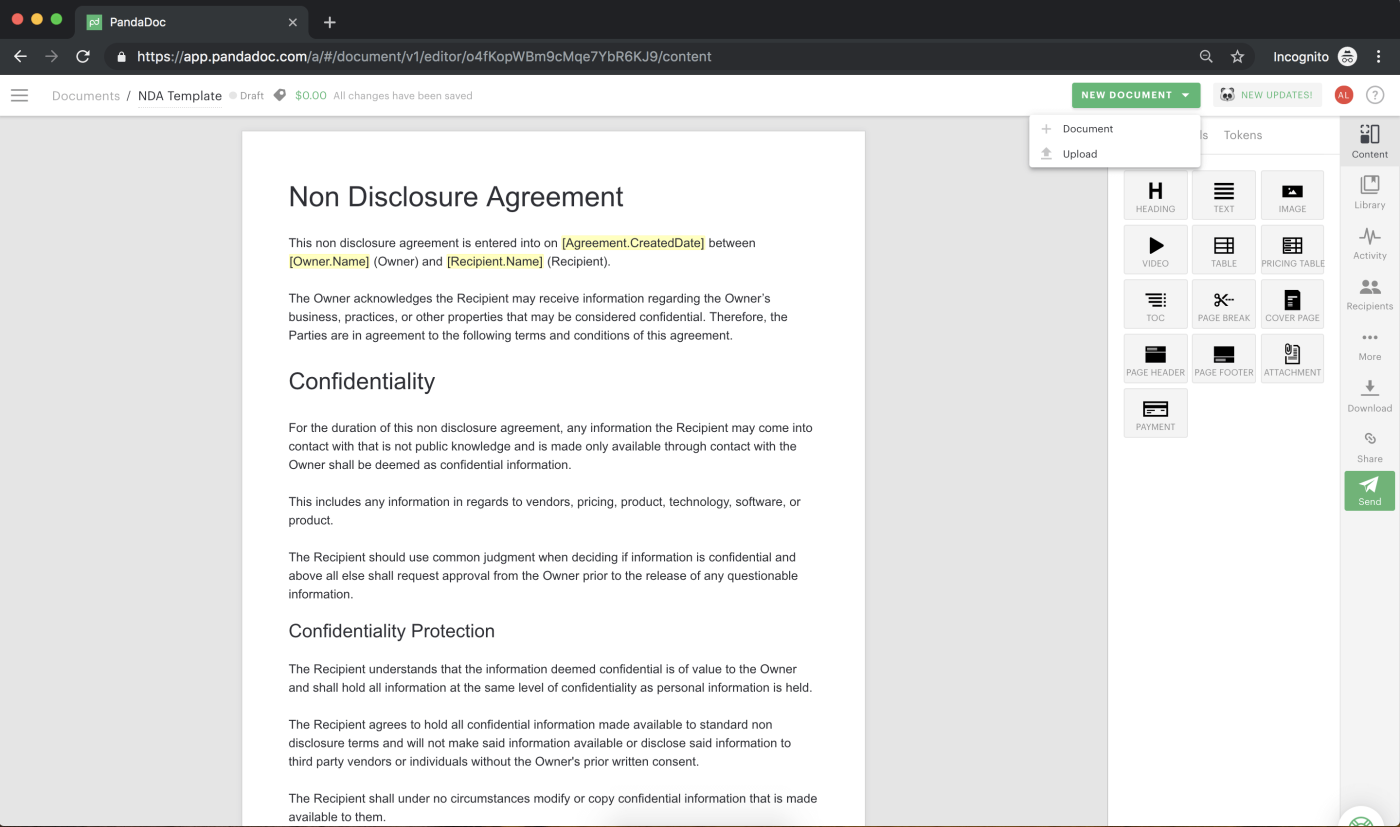
PandaDoc supports a variety of formats and allows you to connect your Google Drive, Dropbox, Box, or OneDrive accounts to upload your document.
Keep in mind that some formats (like PDF) aren’t entirely editable within PandaDoc.
While you can still make some modifications when using non-editable formats with PandaDoc, converting documents into fully-editable formats will provide more tools.
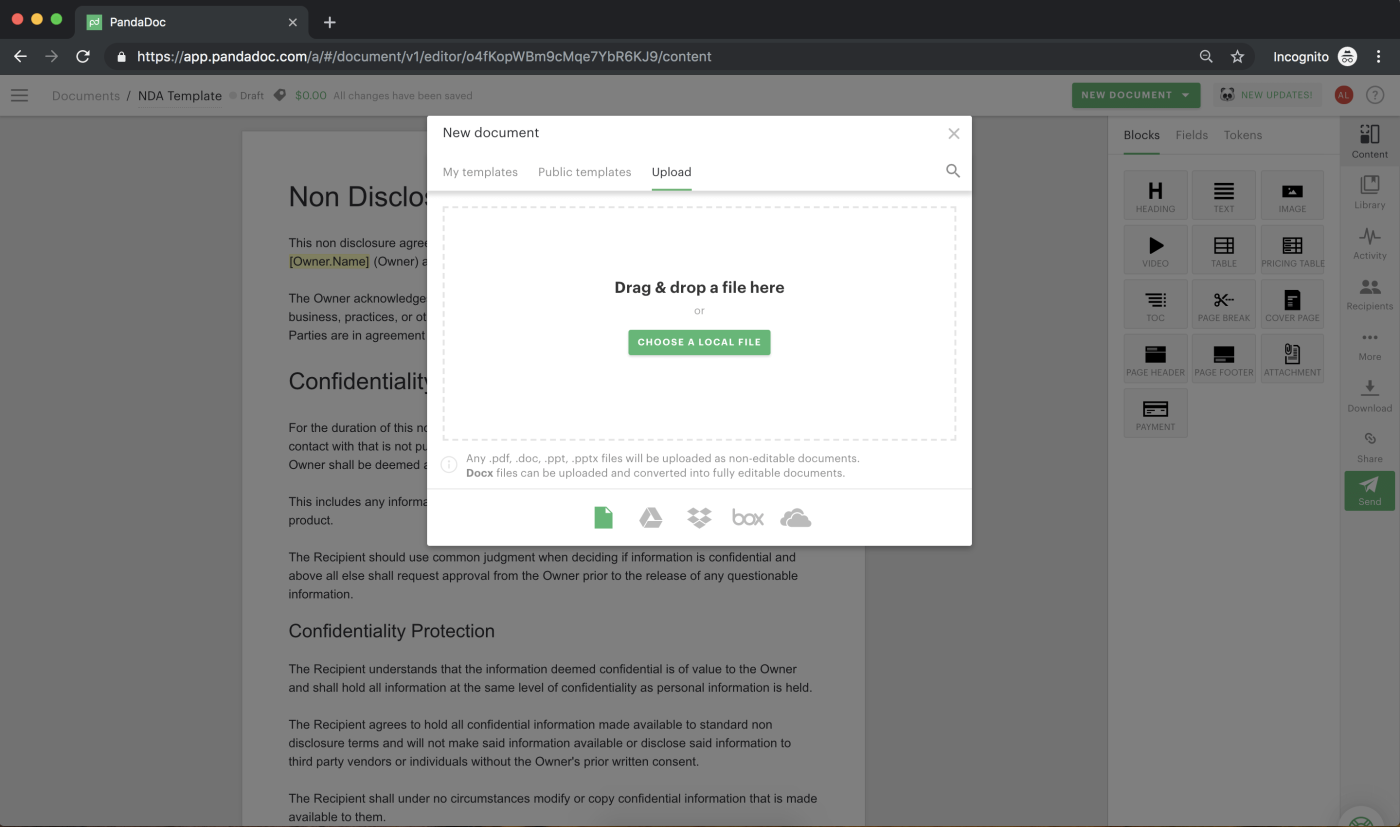
- Import your NDA either directly or from a connected document source by following the prompts on the screen to connect and upload.
Step 3. Review your tools and your document
PandaDoc comes equipped with an array of powerful tools to help you manipulate your document, but some tools will be unavailable if you uploaded a non-editable format.
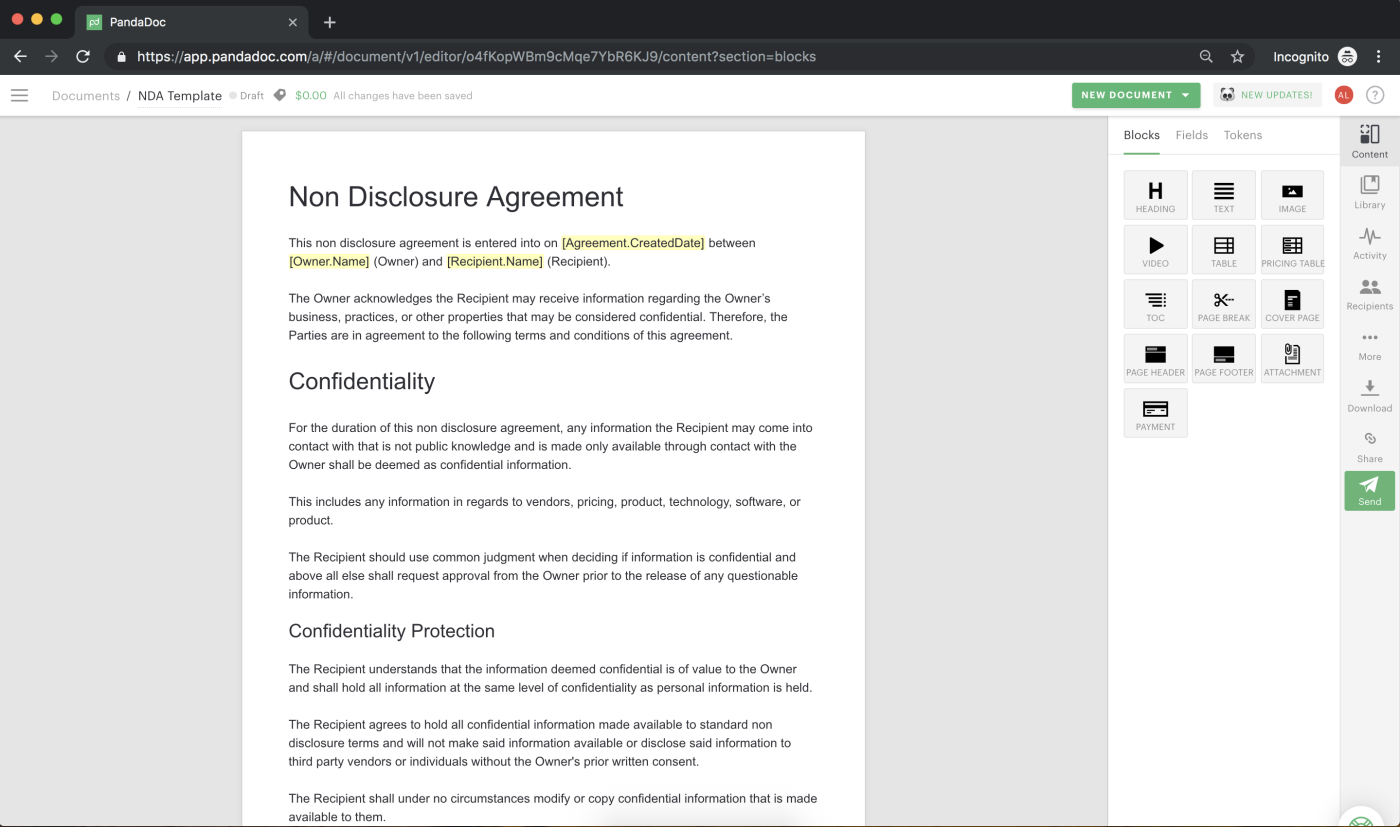
Review all the tools available on the righthand side of the screen.
Notice that the fully editable image (above) contains Blocks, Fields, and Tokens sections while the noneditable format (below) only contains Fields.
Let’s take a look at how native tools within PandaDoc help you to modify and sign your existing NDA.
Step 4. Use block tools to modify your document
PandaDoc uses a drag-and-drop editor to help you quickly insert and modify existing documents.
- Using the Blocks pane in the editing window, drag new content blocks onto the page to further expand the scope of your NDA.
- Add sections to help you further define sensitive information or attach additional rules regarding further disclosure in just a few quick clicks.
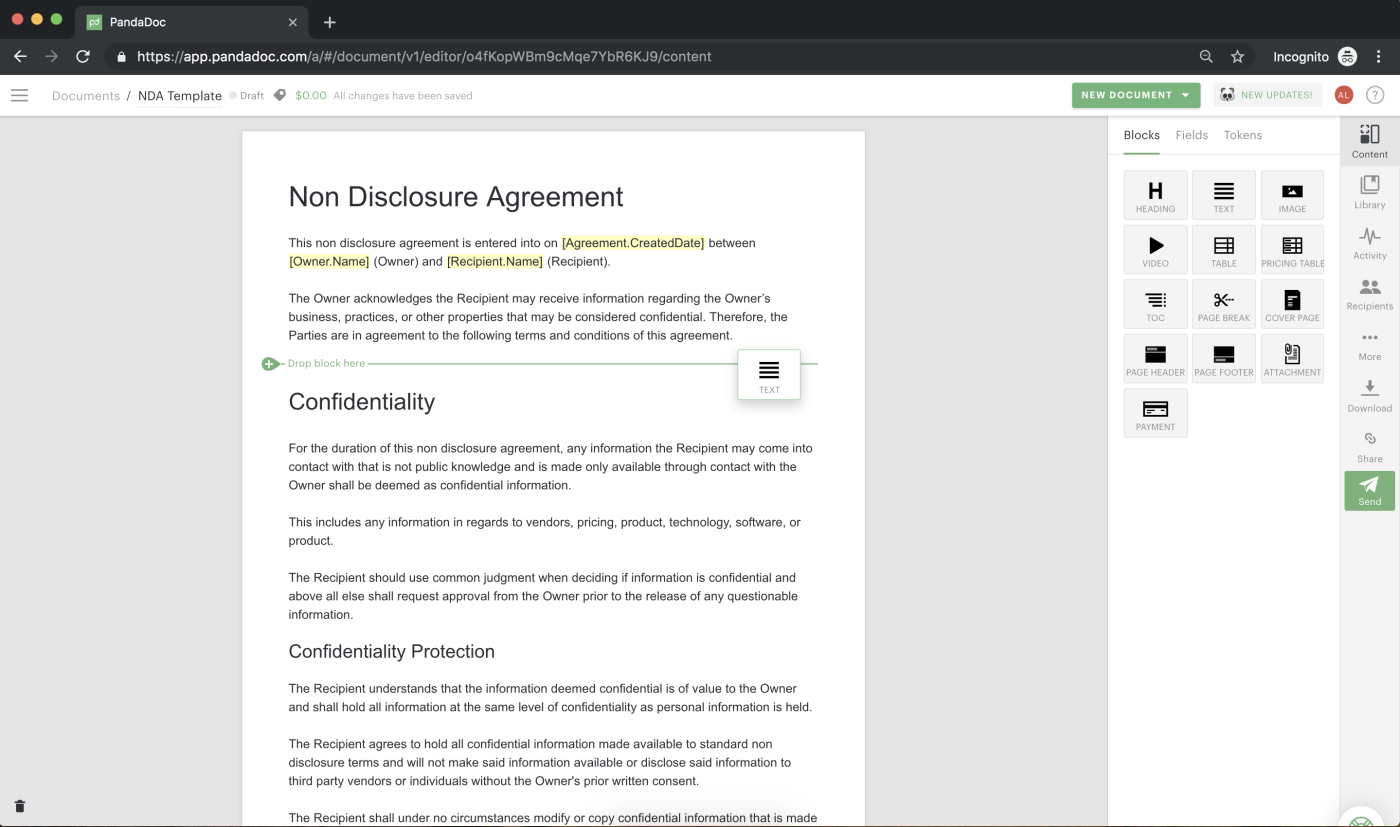
Step 5. Duplicate, lock, and move content
Not happy with your layout? When you select a content block inside your document, the PandaDoc overview changes to a specific toolkit designed for that block.
- Move content up or down within the document.
- Duplicate blocks with a single click.
- Add images by changing the layout.
- You can even restrict editing on specific blocks, a useful feature when creating templates.
Step 6. Add custom tokens for future reuse
If you’re using the PandaDoc NDA template, you’ll probably notice the highlighted yellow text near the top of the document. These are custom tokens.
Custom tokens can be defined within your document and are used to standardize the text.
By using tokens, you can create a single template and fill in personalized information, like names and dates, by typing that information into the Tokens panel.
This helps you save time by automatically completing repetitive information throughout your document.
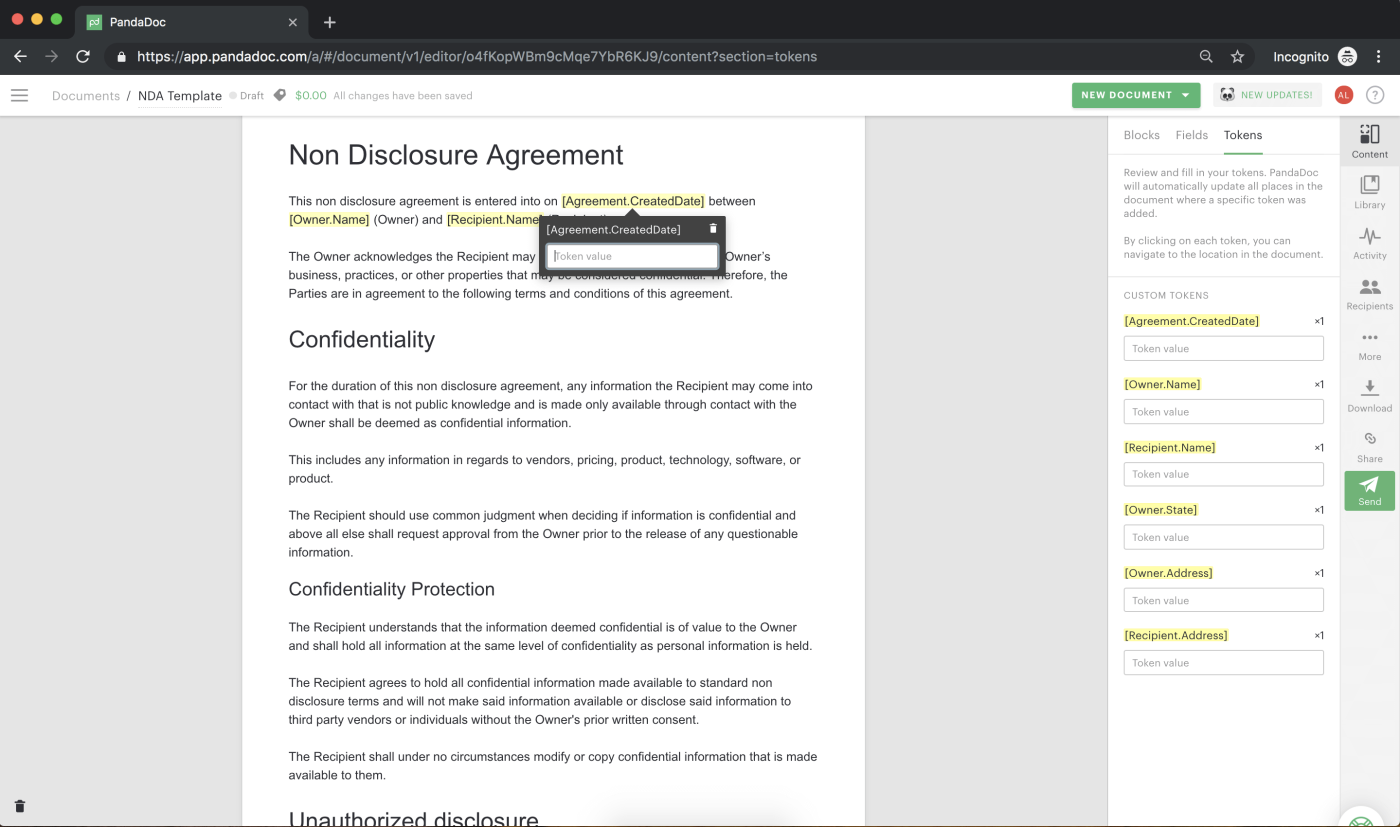
Using PandaDoc to create boilerplate NDAs for employees and contractors to sign is fast, easy, and simple.
Step 7. Use the Fields pane to add signatures and initials to your document
Whether you’re using a non-editable document format or you choose to take advantage of the full PandaDoc toolkit, the Fields pane is always available.
Using the Fields pane, you can drag signature boxes and initial fields onto your document.
While signatures can finalize the entire document, use initials to ensure that employees, contractors, and potential investors make note of a particular section within your NDA.
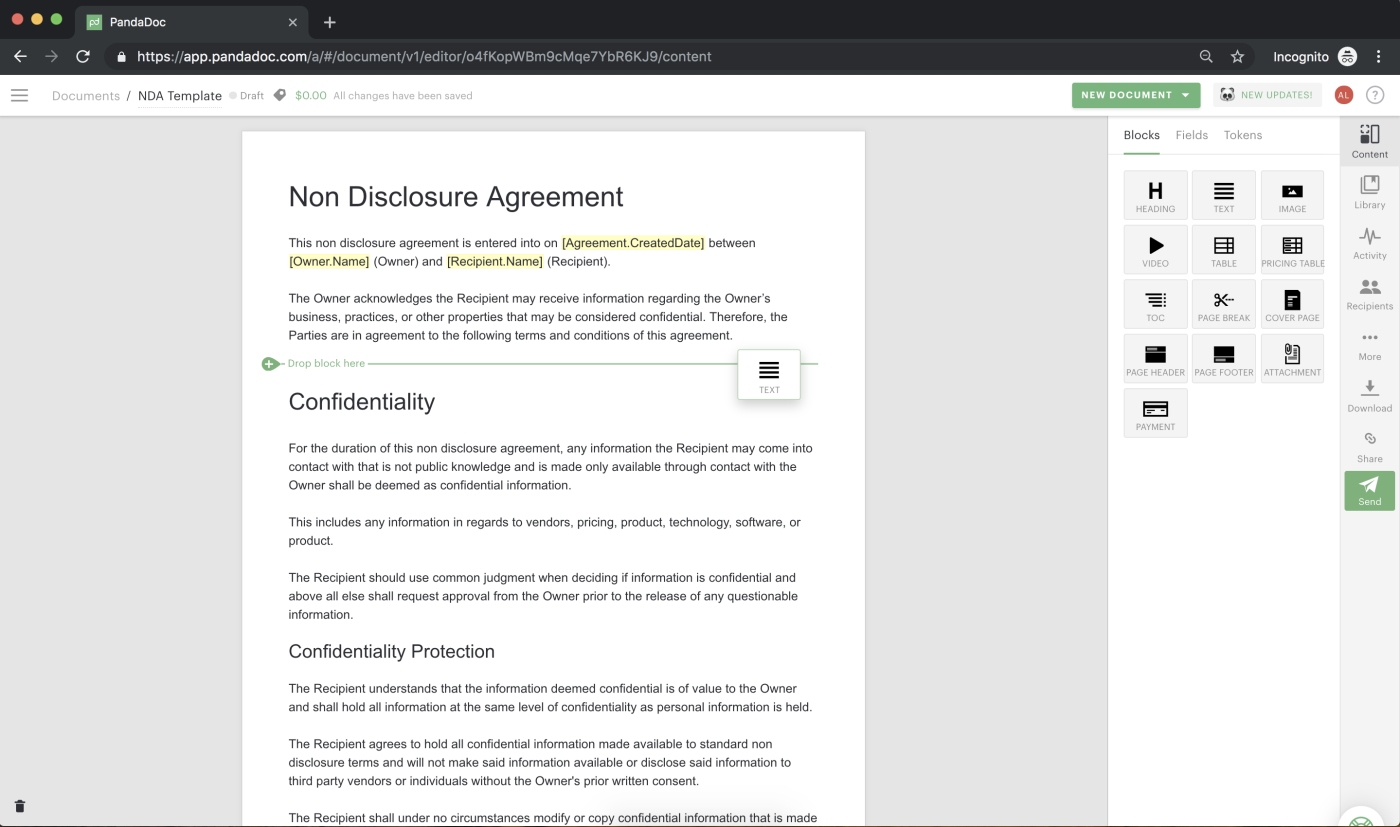
Step 8. Sign NDAs and send documents
PandaDoc gives signers variety when it’s time to submit their signatures.
Signers can draw their signature, upload it, or use any of the preselected text options within PandaDoc.
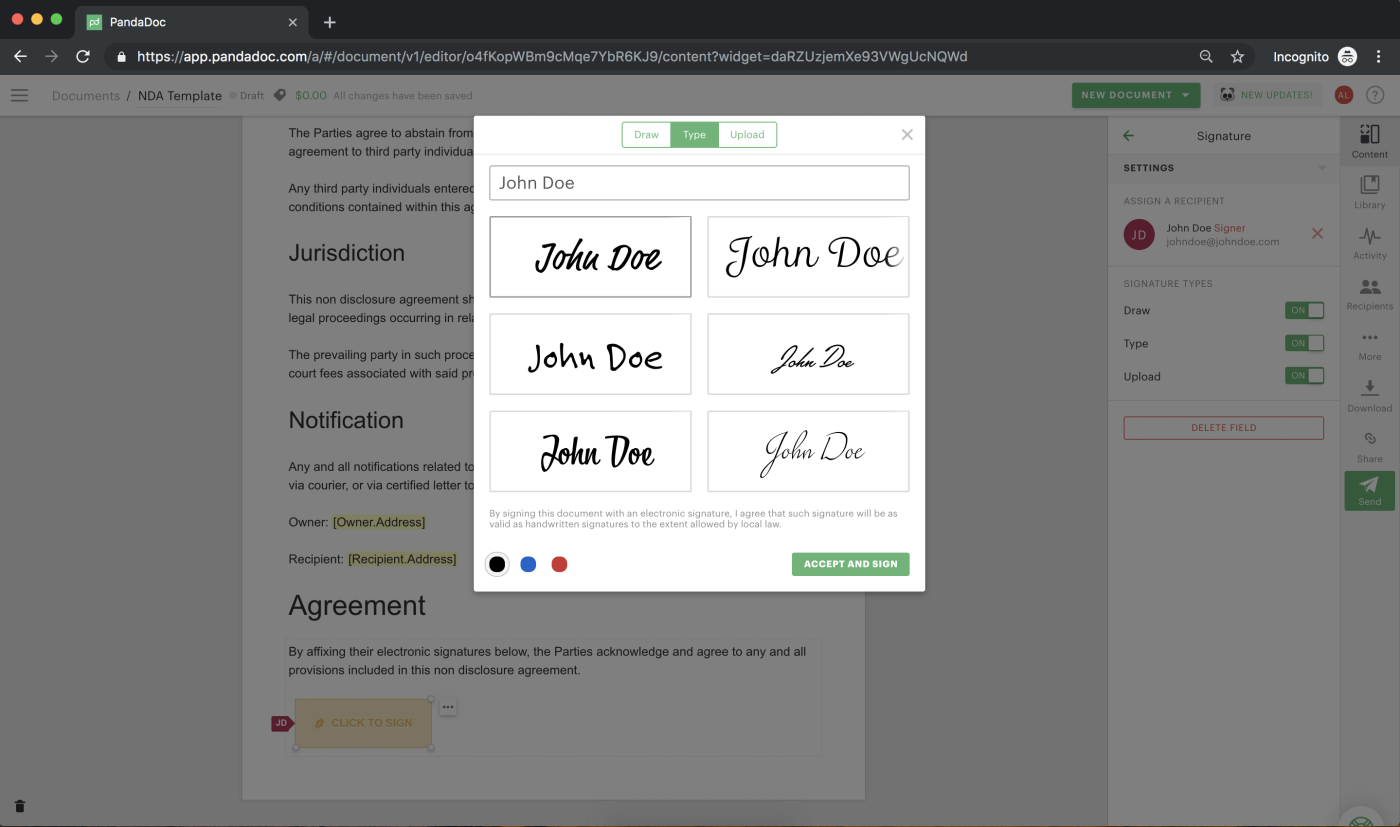
Step 9. Convert your non-disclosure agreement to a template for future use
Just because you’ve finalized a document doesn’t mean that you need to create a new one from scratch.
- Before you close your document, select More from the righthand sidebar.
- Select Convert to a template to save your work.
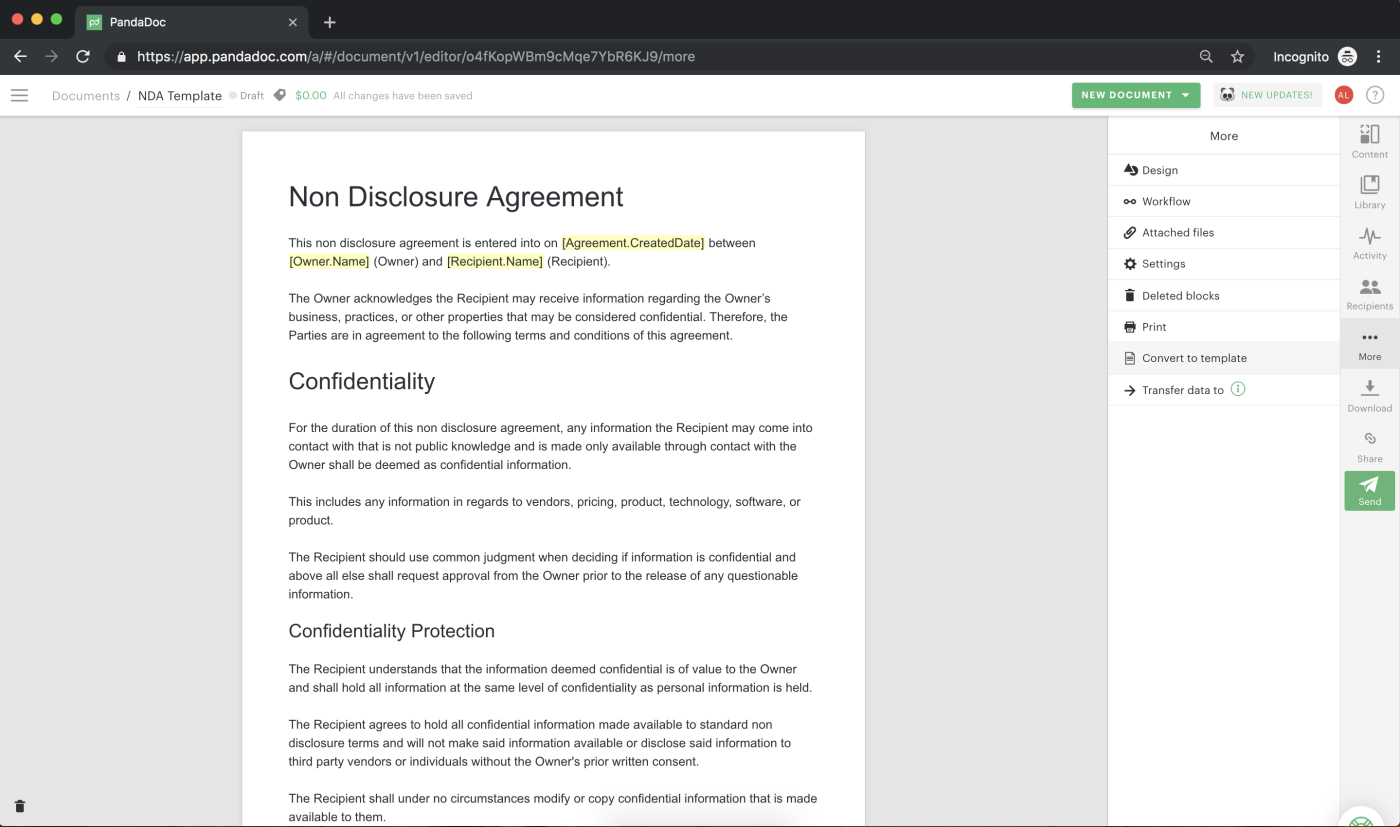
You’re finished!
Now that you’ve saved your work as a template, you’ll be able to create a new NDA using your existing content by accessing your template library.
The next time you send an NDA, you can reload this document in the PandaDoc editor, make a few quick changes, and send it in seconds.

